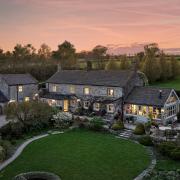This gateway town draws visitors for many different reasons not least its historical connections, says Terry Fletcher

Leyburn may be a small town, with a population of little more than 2,000 people, but it has a big history that is paying dividends in drawing visitors to the northern Dales. The community, a popular gateway to Wensleydale, played its part in two of the most turbulent periods for the English monarchy. This has been the year of Richard III, once widely known only as Shakespeare’s murderous hunchback, but in these parts he has always had his supporters. Now, following the discovery of Richard’s body beneath a car park in Leicester, a protracted legal battle over whether he should be re-buried in York Minster or Leicester Cathedral and his final interment in the Midlands, interest in the last English king to die in battle is intense. Richard grew up at Middleham Castle, just a couple of miles outside Leyburn, and it was one of his favourite homes. Today ‘the Richard effect’ is drawing many more visitors to the castle, now in the care of English Heritage. Site manager, Gill Savage, said: ‘The last two years since his body was found, have been very good for us and the start of this year, particularly Easter, has been very busy. We’ve always been a Mecca for people with an interest in Richard and many come here regularly and bring roses but because of the fresh interest there have been a lot of extra people. Richard loved Middleham and in a way he’s still looking after us.’
Head six miles up the dale and you will find another piece in the Tudor jigsaw. Bolton Castle, high above the River Ure is a four square tower and every child’s idea of what a fortress ought to look like. In the time of Queen Elizabeth it was also a prison where Mary Queen of Scots was held to keep her out of mischief. She did manage to escape at least once, however, but was quickly recaptured. Legend has it that she was found because she dropped her wrap on a hillside still known as Leyburn Shawl.
In July, however, it is more modern history that takes centre stage with a 1940s Weekend, which sees the town’s population more than double with the arrival of the visitors and re-enactors, many of them in period dress or wartime uniforms. Since the festivities began eight years ago it has grown in size each year and this year up to 3,000 visitors a day are expected to view the displays, vintage vehicles and period market as well as to join in the evening dances.
Kate Loughlin, one of the organisers, said: ‘The whole town goes back in time with shops decorated for the period and the staff all get dressed up. There is always plenty to see and do and lots of free events too. We get a complete mix from serious re-enactors in authentic dress, to people who have obviously tried to adapt things from their wardrobes to others in modern dress just enjoying a day out. A lot of people come for the vintage vehicles but others enjoy the entertainment and dancing which is very authentic.’
Martin Crowson, who runs the Dales Haven Guest House with his wife, Alix, who also manages the town’s tourist office, says: ‘It has just got more and more popular. We have people who have stayed with us ever since it started. They just book for the next one before they leave.’ The festival always happens on the last weekend in July and this year is on July 25th-26th.
A more recent bit of history that is still having its effect was the arrival of the Tour de France cycle race last year when Leyburn was one of the official spectator hubs from which to follow the action on giant screens once the peleton had passed through. Ever since the route was announced amateur riders have been coming from all over the country and beyond to follow the route and test themselves against climbs and descents like the notorious Buttertubs Pass into Swaledale.
Martin says: ‘I’m a cyclist myself and some days I used to go out and not see another rider. That has all changed since the Tour. There are cyclists everywhere. It has had a huge effect on the whole of the Dales but it is very noticeable around here.’ Leyburn is definitely finding there is quite a good present in the past.



























